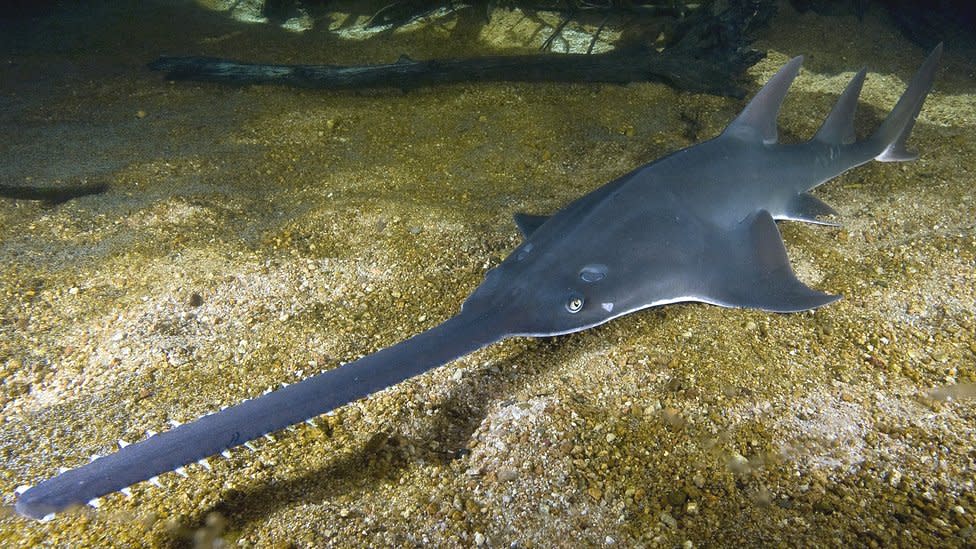They are the most special fish, resembling “hedge trimmers with fins”.
The sawfish, a type of ray, is also one of the most endangered fish living in the oceans.
Once found along the coastlines of 90 countries, the animals are now believed to be extinct in more than half of them, according to a new study.
They disappear due to habitat loss and entanglement in fishing nets, experts say.
Their “saws”, which evolved to sense and attack prey, have now become a risk, leaving them prone to becoming entangled in fishing gear.
“The plight of the sawfish allows us to document the first instances of a wide variety of marine fish facing local extinction due to overfishing,” said Prof Nick Dulvy of Simon Fraser University (SFU) in British Columbia, Canada.
Of the five sawfish species, three are critically endangered while two are listed as endangered, according to the International Union for Conservation of Nature (IUCN) Red List of Threatened Species.
Previously widespread, the sawfish is now believed to be extinct in 55 countries, the study said.
There are 18 countries where at least one species of sawfish is missing, and another 28 where two species have disappeared.
The list of sawfish extinct countries now includes China, Iraq, Haiti, Japan, East Timor, El Salvador, Taiwan, Djibouti and Brunei.
The US and Australia appear to be the last strongholds for the species, considered “lifeboat nations,” where sawfish are better protected.
The study, published in Science Advances, also identified eight countries where urgent action can make a major contribution to saving the species through conservation efforts.
These are Cuba, Tanzania, Colombia, Madagascar, Panama, Brazil, Mexico and Sri Lanka.
“While the situation is dire, we hope to make up for the bad news by highlighting our informed identification of these priority countries with the hope of saving sawfish in their waters,” said Helen Yan of SFU.
She said it is still possible to restore sawfish to more than 70% of their historical range, “if we act now.”
International trade in sawfish is prohibited under the Convention on International Trade in Endangered Species of Flora and Fauna, but targeted and accidental killings are still committed.
Sawfish fins and teeth are sold as trophies, food or medicine, and as spurs for cockfighting.
Sonja Fordham, a researcher on the study and president of Shark Advocates International, said there were opportunities to “bring these extraordinary animals back from the brink.”
But she warned that in too many places “we’re running out of time to save them.”
Follow Helen Twitter
